Wasyl Bakowsky is currently working as the NHIC's Community Ecologist. Wasyl's research is on determining the status of rare community types in southern Ontario. Wasyl studied vegetation community composition of common juniper communities near Thunder Bay, Ontario, for his undergraduate Honours Thesis. His Masters Thesis was entitled "Phytosociology of midwestern savannah communities in the Carolinian Zone". Upon graduation, Wasyl worked in the consulting field for a number of years, gaining experience in plant taxonomy, community description and mapping. His work has taken him to many parts of the province, including southern, central, and northern Ontario.
Ken Baldwin
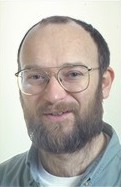
Ken Baldwin is currently employed at GLFC, working in Biodiversity and Ecosystem Processes thematic areas. His current research investigates forest succession within Ontario's boreal and tolerant hardwood ecosystems. He leads the Canadian Forest Ecosystem Classification project, which is developing a standardized classification of forest communities for Canada. Mr. Baldwin obtained his B.Sc. (Hons) in Biology, from McMaster University in 1975 and M.Sc., Plant Ecology, from the University of Western Ontario in 1982. He joined GLFC in 1990.
W.K.W. Baldwin
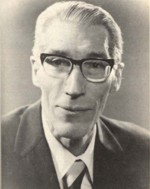
Born in 1910 in York Township (now Toronto), W.K.W. (Bill) Baldwin expressed an early interest in natural history and graduated with a B.A. (1931) and a Masters in Biology (1932) from the University of Toronto. After a stint in the Second World War, Baldwin returned to Canada, where he worked as an instructor at the University of Toronto and Dalhousie University before joining the National Herbarium of Canada (CAN) as a botanist in 1947. Baldwin's work with the Museum involved vegetation field surveys throughout boreal Canada. The destinations that are of most interest to this project are his work from Moosonee, Ontario, to Foxe Basin, NWT (1949), the Clay Belt in northern Ontario (1952-1955), Hudson Bay Lowlands (1956-1958), and the Upper English River area in western Ontario (1961). He was accompanied on these surveys by many important botanists, including A.E. Porsild, Ilmar Hustich, E. Lepage, I.J. Bassett, and H.J. Scoggan. He also worked with Fred Cowell, the northern Ontario naturalist responsible for protecting the Timmins Dactylorhiza, whom he hired to assist him with the field work for the Clay Belt surveys. Although he died before completing his publication on the Hudson Bay Lowlands, Bill Baldwin will long be remembered for his important 1958 publication Plants of the Clay Belt of Northern Ontario and Quebec. For more information on W.K.W. Baldwin, see J.H. Soper and E.L. Bousfield, 1982. A Tribute to William Kirwan Willcocks Baldwin, M.B.E. (1910-1979). The Canadian Field Naturalist 96: 92-97.
Dr. Paul Barclay
Paul Barclay-Estrup emigrated to Calgary, Alberta, from Denmark with his family when he was a boy.
Paul received a B.A from the Univ. of British Columbia and his Ph.D. (Plant Ecology) from Aberdeen,
Scotland, where he studied under Dr. Gimingham. Dr. Paul Barclay was a Professor of Biology at
Lakehead University from 1966 to 1990. While on sabbatical in 1987, he was diagnosed with
leukemia. Shortly there after, ill health forced him to take early disability retirement and he died in
1993. Born Paul Barclay-Estrup, he dropped the hypenated portion of his name in the early 1970s and
became known simply as Dr. Paul Barclay. Over 1100 vascular plant specimens in the Claude E.
Garton Herbarium were collected by Dr. Barclay. He also had a great interest in lichens and
bryophytes, as well as naturalized populations of heather (Calluna and Erica) in North America.
Dr. Bernard Boivin
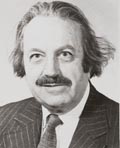
Dr. Bernard Boivin was one of Canada's most knowledgeable and influential botanists during the latter
part of the 20th century. Born in Montreal, Quebec, Bernard Boivin received a B.A. from College
Sainte-Marie (1937) and an L.Sc. from the Universite de Montreal (1941), where he was a student of
Frere Marie-Victorin, author of Flore Laurentianne. Boivin continued his studies at Harvard
University and received his Ph.D. in 1944. His thesis was a monograph on the genus Thalictrum
(Ranunculaceae). While at Harvard, Boivin studied under renowned Professor Merritt L. Fernald,
author of the greatly expanded 1950 edition of Gray's Manual of Botany. Dr. Boivin worked as a
botanist with the Dept. of Agriculture, mainly in Ottawa, from 1948-1981. Most of Boivin's field
activities centred around the prairie provinces, culminating in the 5-volume Flora of the Prairie
Provinces (1967-1981). He identified or annotated many of the specimens in northwestern Ontario's
Quetico Provincial Park. Bernard Boivin was a prolific researcher and writer, who published
extensively in The Canadian Field-Naturalist, Le Naturaliste canadien, and Rhodora, as well as
other journals. One of Boivin's most important contributions was his 1966-67 publication,
"Enumeration des Plantes du Canada" (Le Naturaliste canadien v. 93-94), which was reprinted in
Provencheria v. 6 (1968, 404 pages).
Dr. Rob Foster brings over a decade of research and work experience in boreal and tropical ecosystems to Northern Bioscience, which he cofounded. Rob played a lead role in the analysis and development of the ecosite and wetland ecosystem classifications for northwestern Ontario. There is an excellent biography of Dr. Foster on his company's website, which can be accessed by clicking here.
Dr. Claude E. Garton

Dr. Claude Eugene Garton was born in 1907 near Aylmer, Ontario. In 1928, after Normal School, he accepted a
public school teaching position in Port Arthur (formerly half of the present city of Thunder Bay). This
career continued until his retirement in 1966. He obtained a degree, taken extramurally, in Chemistry
and Biology from Queen's University in 1942.
His summer plant collecting forays in northwestern Ontario began in the 1930s. This was the nucleus of
a personal plant collection that eventually became a herbarium bearing his name. His specimens were
always well prepared, with detailed label data. Often he collected duplicate specimens, which later
were exchanged with other institutions.
In 1967, Claude Garton donated his personal collection of 14,000 specimens to Lakehead University
and became the curator of the herbarium. He was involved with various botany courses and field
schools. In 1979, Lakehead University conferred an Honorary Doctor of Science degree upon him. He
continued to spend his summer's plant collecting, often with student assistants. In the early 1980s,
Claude Garton did extensive plant collecting on the islands and shores of Lake Nipigon on contract to
Ottawa. Through the latter part of that decade, ill health started to limit his plant forays but he managed
to build up the herbarium to over 98,000 specimens, partly through exchanges.
Claude Garton was also an avid naturalist and was one of the founders of the Thunder Bay Field
Naturalists in 1933. He had an active role in many conservation efforts in northwestern Ontario.
However, his legacy is the Claude Garton Herbarium, a regional herbarium of northwestern Ontario,
built upon nearly sixty years of plant collecting.
Mr. Allan Harris is a biologist with 15 years experience in northern Ontario. He is co-founder of Northern Bioscience, an ecological consulting company based in Thunder Bay, Ontario. Al played a lead role in the analysis and development of the ecosite and wetland ecosystem classifications for northwestern Ontario while with the Ontario Ministry of Natural Resources. There is an excellent biography of Al Harris on his company's website, which can be accessed by clicking here.
S.T.B. Losee

S.T.B. (Stan) Losee was a leading-edge photogrammetrist and coordinator of slivicultural research for
Abitibi. He was stationed at Abitibi's forestry department headquarters here in S.S.M.(now St. Mary's
Paper). Stan Losee conducted silvicultural trials and research on modified harvesting of black spruce at
the Abitibi Woodlands Laboratory in Raith, west of Thunder Bay, during the 1950s and 1960s.
Together with Leo Vidlak, they pioneered strip cutting and several other European-derived techniques.
Losee also had a keen interest in site classification and developed a classification for the Woodlands
Lab. By all accounts, Stan Losee was a remarkable man who persisted in promoting better silvicuture
and forestry practices.
Prior to his employment with Abitibi, Losee worked with the Aerial Surveys Section of the Dominion
Forest Service (now the Canadian Forest Service). His hobbies included plant collecting and
photography. While living in the Sault, Losee and other local foresters, including Dieter Ropke and Dr.
Walter Stanek founded the Sault Ste. Marie Botanical Society. This group was instrumental in
preserving a botanically diverse tract of land in Sault Ste. Marie, now known as Wishart Park. Stan
Losee retired from Abitibi in the early 1970s to become a professor in the Forestry Department at
Lakehead University. His extensive plant collection from the Algoma District resides at Lakehead's
Claude Garton Herbarium.
Mike Oldham

Mike Oldham is currently NHICs' Botanist/Herpetologist, has worked as an ecologist with MNR for the past 11 years, at offices in London, Aylmer, and now Peterborough. Prior to that Mr. Oldham was staff biologist for the Essex Region Conservation Authority for 5 years. Mr. Oldham has diverse interests in natural history and conservation biology, but particularly vascular plants, amphibians, reptiles, and molluscs. His fieldwork in previously unexplored areas of the province has led to the discovery of several new plant and animal species for the province, plus numerous new sites for rare species. Mr. Oldham sits on a number of provincial and national committees, such as COSSARO (Committee on the Status of Species at Risk in Ontario), COSEWIC (Committee on the Status of Endangered Wildlife in Canada) Plants Subcommittee, and DAPCAN (Declining Amphibian Populations Canada), as well as on two RENEW (Recovery of Nationally Endangered Wildlife) recovery teams for Blanchard's Cricket Frog and Eastern Spiny Softshell Turtle.
John L. Riley
John L. Riley is the Director of Conservation Science and Stewardship for the Nature Conservancy of
Canada (NCC). His role with the NCC is to deliver science and stewardship programs in support of
direct conservation action. Mr. Riley studied botany at the University of Toronto, and was a botanist on
staff at the Royal Ontario Museum for eight years. He also undertook graduate studies in geology at the
University of Waterloo while working for the Ontario Geological Survey, where he ran the Ontario
Peatland Inventory. Before joining the Nature Conservancy of Canada, Mr. Riley worked with the
Ontario Ministry of Natural Resources as the regional ecologist for southern and central Ontario. He
also served as Director of the Federation of Ontario Naturalists. John Riley has done extensive field
work in northern Ontario, particularly in the Hudson Bay Lowlands. This work has culminated in the
publication "Hudson Bay Lowlands" (Riley, in press, 2003).
Dieter Ropke
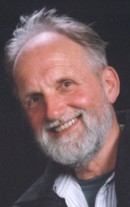
Dieter Ropke was a Forest Research Technician with GLFC from 1965 to 1993. He developed an interest in Northern Ontario Flora while working in Timmins in the late Fifties. His work took him to remote areas of the Province like Dryden, Nipigon, Orient Bay, Chapleau and Cochrane. The search for, identification, collection and preparation of plant specimens was a source of much joy to him. He provided duplicates for the National Collection and donated the bulk of his own collection to Laurentian University which had an active interest in the material at that time.
Marlies Schoenefeld
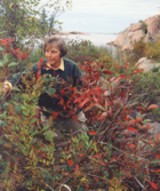
Born in Thuringen, Germany in 1939, Marlies lived in London, England before coming to Canada in 1959 and Sudbury in 1968. A passionate hiker, canoeist and birder, over the years she has explored every ridge, lake and pathway of Killarney Provincial Park, and she established a Herbarium for Killarney Provincial Park in 1998. In 1974 she completed an undergraduate degree in Botany at Laurentian University and has volunteered for many years in the Laurentian University Herbarium. As well as collecting plants on Whitewater Canoe trips on the Thelon, the Bloodvein and French Rivers , she and her husband Dieter often travel to exotic locations to explore new life forms and scenery, including Colombia in 1971, Guatemala in 1975-78, and Baffin Island in 1984. She has been recognized for her contribution to the Canadian Breeding Bird Atlas, the Mammal Atlas and the Canadian Lakes Loon Survey, and she is President of the Sudbury Naturalists. An accomplished artist, Marlies instructs watercolour sketching at Killarney Provincial Park and on "Paddle and Paint" trips in Georgian Bay and the North Channel during the summer months, and her paintings hang in private collections in Canada, the United States and Europe.
Dr. Paul Syme
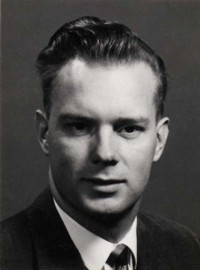
Dr. Paul Syme was an Insect Survey Officer with the Forest Insect and Disease Survey Unit. During his
first 13 years at GLFRC, he worked on the biological control of European pine shoot moth. Field
studies were carried out at the Elmira Field Station just north of Elmira in Waterloo Co. Study plots
were set up from Niagara Falls to Cockburn Island at the northern end of Lake Huron. Many of the
plant specimens collected during this 1960s study were made by student Kenneth Cawker, listed as
K.B.C. on the herbarium sheet.
While with the Forest Insect and Disease Survey Unit, he was responsible for identifying insects
damaging Ontario forests and providing forest managers and other research agencies with information
on these insects. Dr. Syme was born in Hamilton, Ontario, in 1932; he obtained his B.Sc. (Hon) in
Biology from the University of Toronto in 1956. Dr. Syme moved back to his hometown for his M.Sc.
in Entomology from McMaster University, then returned to the University of Toronto for his Ph.D.,
which he completed in 1962. His Ph.D. thesis was entitled 'The morphology of lepidopterous eggs
with descriptions of two hundred and forty eight species'. Dr. Syme joined the then Forest Insect
Laboratory in 1961 and retired from the Canadian Forest Service in 1993.
Shan Walshe
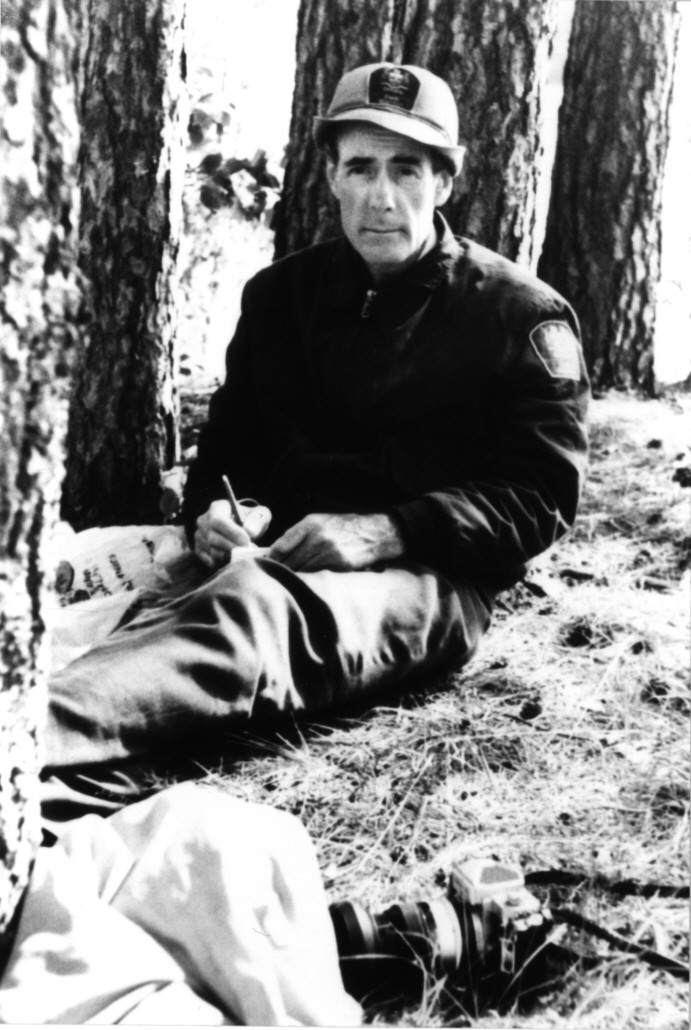
Shan Walshe was the Quetico Park Naturalist from 1970 until his untimely death at the age of 55 in
1991. The majority of specimens in Quetico's herbarium were collected by Shan Walshe. Park
Naturalist was not his first career. After receiving an honours degree in Languages in 1959, Shan took a
year of teachers training and then taught at the secondary school level for seven years. He decided to
return to school and changed to the study of science, receiving two degrees in just two years, a B.Sc.
and an M.Sc. in Plant Ecology in 1968 from the University of Toronto. He worked in the International
Biological Program as well as summer and short term jobs at various other Parks and Natural
Resources programs.
Shan's book "Plants of Quetico and the Ontario Shield" was published by the Quetico Foundation
and the University of Toronto Press in 1980 (republished in 1998 by the Friends of Quetico Park). He
identified and described the ecology of the 650 species of vascular plants found in Quetico Park. Shan,
wife Margie, and four children lived in a log cabin on French Lake in Quetico's wilderness from 1974-
1991. He left behind a legacy of research, botanical slides, photographs, herbarium specimens, and
many stories.
Keith Winterhalder
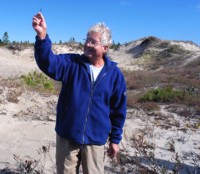
Professor Keith Winterhalder studied plant and soil ecology at the University of Wales, the University of New England (Australia) and the University of Liverpool (England). He taught botany, ecology, and soil science at Laurentian University in Sudbury, Ontario from 1965-1999. On his arrival at Laurentian University, he took over as curator of the recently-founded herbarium, and since his retirement in 1999 has been Curator Emeritus. A plant ecologist by training, his research has centred on the ecology of nutrient-poor, saline and metal-contaminated soils, and the restoration of industrially-damaged lands. A keen field botanist, he has collected widely in northern Ontario and Manitoulin Island, as well as in Australia and other parts of the world. He is a founding member of the Canadian Land Reclamation Association, the American Society for Surface Mining and Reclamation, and the Society for Ecological Restoration, and a member of the Editorial Board of the journal (Restoration Ecology). He is past-President of the Canadian Botanical Association and the Canadian Land Reclamation Association, and a recipient of the Canadian Parks Service Heritage Award and the Noranda Mines Land Reclamation Award.

